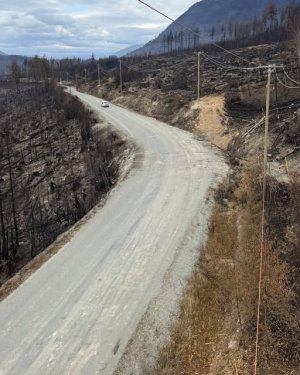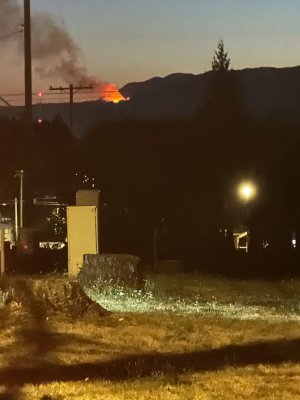IronNoggin
Well-Known Member
2025 Mount Underwood Wildfire
Current situationAugust 21, 2025
The Mount Underwood Wildfire is now BEING HELD!!
This fire status does not mean the fire is out. BC Wildfire changes the status from Out of Control to Being Held when a wildfire is projected, based on fuel and weather conditions and resource availability, to remain within the current perimeter, control line or boundary.
The Mount Underwood Wildfire is currently 3,548 hectares. Over the past week, approximately 40 mm of rain has fallen in the vicinity of the Mount Underwood Fire. Fire behaviour and activity has been minimal on this incident, primarily Rank 1 – a smoldering ground fire with no open flame.
Crews are continuing mop-up operations along the North flank. On the east flank, firefighters are patrolling up to 100 feet along the perimeter to extinguish hot spots. In the southern sections, rappel crews have established access, allowing firefighters to patrol and mop up a 100-foot zone. Crews are digging into the forest floor to expose and extinguish smoldering hot spots within 100 feet of the fire’s edge. They now are able to access all four flanks of the fire and are continuing to push containment around the perimeter.
The Franklin River Road between Port Alberni and Bamfield remains closed. Check DriveBC for updates on road closure.
The Youbou route to Bamfield remains open, and Bamfield announced yesterday that it was open for business. The community is welcoming back visitors, but asking them to be prepared for the road conditions and ready for some restrictions the power outage may create. Not all businesses are open, so make sure to check in with your accommodations before heading to Bamfield.
The Alberni-Clayoquot Regional District (ACRD) Emergency Operations Centre (EOC), in coordination with BC Wildfire Service, the City of Port Alberni, and Tseshaht First Nation, downgraded and updated the Evacuation Order and Evacuation Alerts, issued due to the Mount Underwood Wildfire on August 12, 2025. For full details refer to the Evacuation Alerts and Orders section below, or go to 20-08-2025 Mount Underwood Evacuation Alerts and Order update News Release








